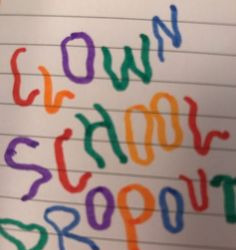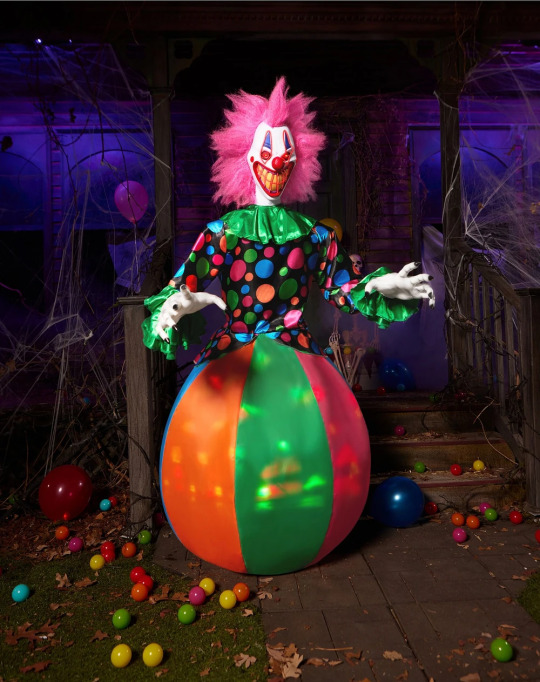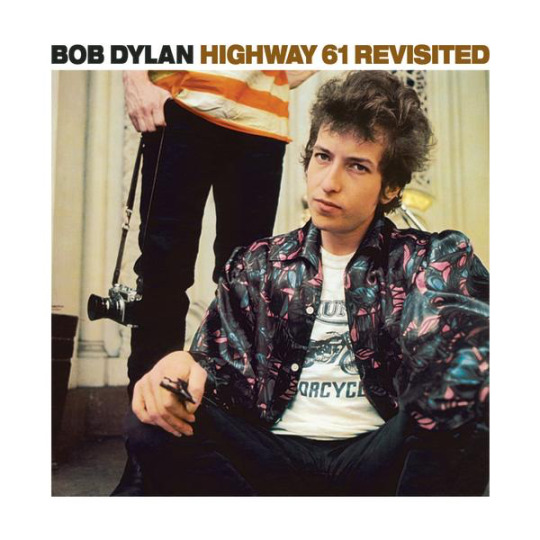#he reminds me of like every single Shotgun Willy song
Explore tagged Tumblr posts
Text
ᴡᴇʟᴄᴏᴍᴇ ᴛᴏ ᴛʜᴇ ꜰɪʀꜱᴛ ᴘᴏꜱᴛ ɪɴ ᴀɴ ɪɴᴄᴏɴꜱɪꜱᴛᴇɴᴛ ᴘᴏꜱᴛ ꜱᴇʀɪᴇꜱ ᴡʜᴇʀᴇ ɪ ꜱʜᴀʀᴇ ᴛʜᴇ ꜱᴏɴɢꜱ ɪ ᴀꜱꜱᴏᴄɪᴀᴛᴇ ᴡɪᴛʜ ᴄᴇʀᴛᴀɪɴ ꜱᴘɪʀɪᴛ ʜᴀʟʟᴏᴡᴇᴇɴ ᴀɴɪᴍᴀᴛʀᴏɴɪᴄꜱ + ꜱᴏᴍᴇ ᴘɪᴄᴛᴜʀᴇꜱ ᴛʜᴀᴛ ɪ ꜰɪɴᴅ ᴛʜᴀᴛ ꜰɪᴛ ᴛʜᴇɪʀ ᴀᴇꜱᴛʜᴇᴛɪᴄ!
ᴛᴏᴅᴀʏ ɪꜱ ᴍʀ. ᴘᴜɴᴄʜʏ ʙᴇᴄᴀᴜꜱᴇ ɪ ʜᴀᴠᴇ ʙᴇᴇɴ ᴏʙꜱᴇꜱꜱᴇᴅ ᴡɪᴛʜ ʜɪᴍ ᴀʟʟ ᴡᴇᴇᴋ :0}






#i swear i dont have tiktok music taste :0{#he reminds me of like every single Shotgun Willy song#im not that much of a fan of his backstory though#he looks like he would be a funny guy#I love how original he looks compared to the other clown animatronics spirit has sold though!#i want to be his friend#and i want to steal his fit#like have you seen his coat tails??? theyre amazing!#spirit halloween#mr. punchy#tw clowns#animatronic#mr punchy#clown#creepy clown#song recommendation#Spotify
3 notes
·
View notes
Text
Bob Dylan - Highway 61 Revisited (Album Review)

Highway 61 Revisited is the sixth studio album from American singer-songwriter Bob Dylan.
Dylan is one of the artists who can manage to deliver a complex message without sacrificing any accessibility in the music. And while Dylan may not be one of the most talented singers, his passion for singing is evident. Dylan doesn't sing because he boasts a beautiful voice, rather because he has a message he wants the world to hear. Dylan's singing comes from a need to pour out his feelings to the world. Some find it hard to listen to because of the rawness but for a lot of Dylan's fans, that is what makes them want to listen to Dylan.
Highway 61 Revisited is a seminal work of art for Bob Dylan. The record signifies his transition from being a folk hero to being a rock star. This album catapulted Dylan even more into the spotlight as an amazing musician. This is evident in the success of the single, "Like A Rolling Stone." This album is also where Dylan ditched his folk style for a more electric, rock-and-roll style. This shift in styles alienated a bulk of his folk following.
The record starts with the biggest hit of Dylan's career, "Like A Rolling Stone." A single snare hit starts off the song, followed by electric guitar licks. While the song feels a bit joyful at the start, that idea gets thrown out the window once Dylan starts with the verse. The main theme of the song is the fall from grace of someone who used to live a flamboyant life but now has been thrown into desolation. Not only are they thrown into this relentless world, but they also cannot fend for themselves because they never experienced such torment when they were living their privileged life. On the chorus, Dylan sneers at the person in question, asking them without mercy, "How does it feel?" It's just one phrase, but it feels like a stab to the heart. In the first verse, Dylan reminds "Miss Lonely" about how she dismissed warnings and laughed at downtrodden people, thinking she would never be in their position. But now it probably doesn't feel as good because she did end up in their position after all. Dylan reminds her in the second verse about how even though she went to a prestigious school, she never gained any useful education because she wasted her time partying and drinking. Streetlife is going to be hard for her as she never learned anything about it. Her situation is so bad that even the Devil won't make a deal with her, won't give her an alibi. Her failure is her own doing. The last line of the final verse has two meanings. When you're invisible, you don't have any secret to conceal. Miss Lonely has fallen to the level of people she used to laugh at. Now she has become invisible like every other person, a situation which is terrible for someone who might be used to greater levels of attention, like Miss Lonely herself. This exact thing, however, can also be liberating because now she doesn't have to conceal anything because she has nothing to lose.
Next up is the fast-paced song "Tombstone Blues." It is the most raucous song on the album instrumentation-wise. The song portrays an absurdist account of America during the escalating Vietnam War. Dylan does this by using historical characters, including the likes of Jack the Ripper, John the Baptist, Beethoven, Ma Rainey, and the king of the Philistines. In the first verse, Dylan sees through the facade the authorities have created when they endorse the "reincarnation of Paul Revere's horse," meaning they're selling an illusion to the public that they need to fight for a cause. In the same verse, Dylan portrays Jack the Ripper as being the head of a government organization, depicting blood-thirsty, power-hungry politics. The chorus brings light to how the authorities have enough money to send armies to fight in other countries while the people in the country suffer. The second verse portrays the liberation of sexuality. The doctor criticizes the hysterical bride's sexual lifestyle, but the medicine man comforts her. He says that "it's not poison" and it won't kill her, rejecting pious and traditional views towards sex.
"It Takes a Lot to Laugh, It Takes a Train to Cry" is an acoustic/electric-blues song. The song is a mix of lines taken from different blues songs and some of Dylan's lyrics peppered in. The song has a slow tempo and a slow, sensual tone. His voice is warm on this one, in contrast to the raw tone he has on the other songs on the record. The drums at the start are offbeat but transition into a shuffling beat. The acoustic guitar plays throughout along with a piano. There's also a small harmonica solo.
"From a Buick 6" is a reckless song with crowded, bustling instrumentation. The band is very raucous in its approach, with Al Kooper on the organ and Mike Bloomfield on guitar. There's also a soaring harmonica after the bridge before the final verse. The instrumentation is similar to The Kinks' version of the Kokomo Arnold song, "Milk Cow Blues." The song also borrows a few lyrics from a Sleepy John Estes song, also of the name "Milk Cow Blues." While I used to think this song was actually about a woman, I doubt that with Dylan it's that simple. Other possible interpretations I found with some research suggest that the song could be about a shotgun or heroin addiction. The latter does seem plausible to me as, during the time of writing, Dylan was known to be hanging around the junkies of NYC and has claimed himself that he kicked a heroin habit.
"Ballad of a Thin Man" is Dylan's retort to mainstream society who are out of touch with the changes happening in the culture. It can also be interpreted as an attack on journalists and mainstream media who cause drama out of innocent things while avoiding the reality of social issues like racism and sexism. These characteristics have been personified as a certain Mr. Jones. He walks into a room where he sees a naked man, finding it hard to comprehend the situation. This depicts a certain part of society that is against a lot of societal changes such as counterculture, feminism, civil rights movements, etc. Not only are they against these changes, but they're also confused by them since they are so out of touch. When Mr. Jones notices the new changes in culture, he looks at the participants as if he was watching a geek at a circus. He gets called a freak by one of them which offends him as he thinks he is the only normal person there. Dylan ironically calls Mr. Jones knowledgable and well-read, when in reality all he has is surface knowledge and no experience in anything he talks about.
"Queen Jane Approximately" seems like a more sunny contemporary of "Like a Rolling Stone." It might not be directed towards the same person but it continues in the same path of warning someone of a fall from grace. However, unlike "Like a Rolling Stone," this song is not completely cold-hearted as Dylan repeatedly invites Queen Jane to come to see him and get away from all the negativity that surrounds her. Also, Dylan's singing is not as sneery as it was in "Like a Rolling Stone," but rather inviting. Now, there has been a lot of debate over the actual meaning of the song and who Queen Jane is. Some say Queen Jane is Joan Baez, Dylan's then-girlfriend because his relationship with her had deteriorated by that time. Also, Dylan and Joan were known as the King and Queen of Folk. While that might be true, I think that the song is about Dylan himself.
"Highway 61 Revisited" has a comical and cartoonish feel to it. The song starts with a cartoon sound effect that could very well be from something like "Wile E. Coyote and the Road Runner." It has fun, frantic instrumentation, backed again by Al Kooper and Mike Bloomfield. It is small compared to other songs on the record, with only five seven-line verses with no chorus. Except for the first verse, in every verse, the first four lines rhyme and the last three lines rhyme, creating a rhyme scheme of A/A/A/A/B/B/B. In the first verse, Dylan recreates the 22nd chapter of the Bible, where God tells Abraham to sacrifice his son Isaac. Here, God and Abraham, nicknamed Abe, speak in 60s slang. In the second verse, Dylan uses Blind Willie McTell's alias Georgia Sam and depicts a conversation between Georgia Sam and segregationist Virginia democrat Howard Smith. Such conversations are the theme of all the verses which end by pointing to Highway 61.
"Just Like Tom Thumb's Blues" has slow, groovy instrumentation. Dylan sings in a warm and melancholic tone. The song depicts being lost in the rain in Juárez, Mexico at Easter time. The narrator in the song acts as a tour guide to you, he tells you about encounters with people such as the ladies Saint Annie and Sweet Melinda. He tells you to say thanks to Saint Annie if you see her, of course ironically. She seems to have hooked him onto some sort of substance, possibly herself or maybe she gave him some sort of STI. The problem is so extreme that even the narrator's doctor, who is his good friend, can't tell him what's wrong with him. Sweet Melinda is so stunning and beautiful, that she brings out the narrator's animalistic instincts and takes his breath away. The narrator tells us about how he started drinking and doing drugs until he was so helpless that he called it quits and wanted to go back to NYC as he believed "I've had enough."
The album ends with the 11-and-a-half minute behemoth of a song, "Desolation Row." This is what I consider not only the best Dylan song in terms of songwriting but also one of the best songs that were ever written. It is the only truly acoustic/folk-like song on the entire record. Similar to Tombstone Blues, in Desolation Row, Dylan uses various characters and people from history to depict a portrait of life in poverty. The title comes from "skid row," used to refer to a run-down area of a city, often populated with cheap barrooms and hotels. While something like skid row would be used to portray a run-down area with no hope, Desolation Row hints to a sense of redemption. See, Desolation Row does not only portray a ramshackle place but also a progression in the thinking and freedom of culture. This can be seen in the lyrics. For example, Cinderella now no longer awaits her Prince Charming to make her life better, instead, she takes charge of her own life. This can be interpreted in either a feminist perspective or of someone successful. However, Dylan quickly reverses this with a twist at the end of the verse. Cinderella did not end up becoming a princess but instead sweeping on Desolation Row. In the same verse, Dylan challenges the traditional, old-age conception of love and romance. Romeo enters telling Cinderella that she belongs to him, but is confronted by someone else saying that he's in the "wrong place." Desolation Row is no longer a place of conventional norms, but a fledgling era of modernism. While I could go on and on about this song, trying to give mine and other people's interpretation of it, I suggest you give it a try on your own, otherwise, we'll be sitting here for quite a while.
In summary, "Highway 61 Revisited" is what I consider to be the seminal work of art for Dylan and also one of the best albums ever to be made. This album contains some of Dylan's most abstract lyrics and powerful deliveries. On the record, Dylan fuses folk with electric rock instrumentation in a funky, eclectic manner. The sounds presented on this album were kind of unprecedented at the time this was album was released, but they've stood the test of time. Dylan's electric venture was not much liked by his previous folk following as they thought he was a traitor and betrayed them. As Dylan wasn't being direct anymore, but rather abstract, they thought he was losing the narrative of the folk movement. However, this does not mean Dylan wasn't talking about important subjects, he was just being more subtle and abstract about it.
So yeah, this is one of my favorite albums of all time and I recommend you check it out.
Overall Rating: 9 / 10
4 notes
·
View notes